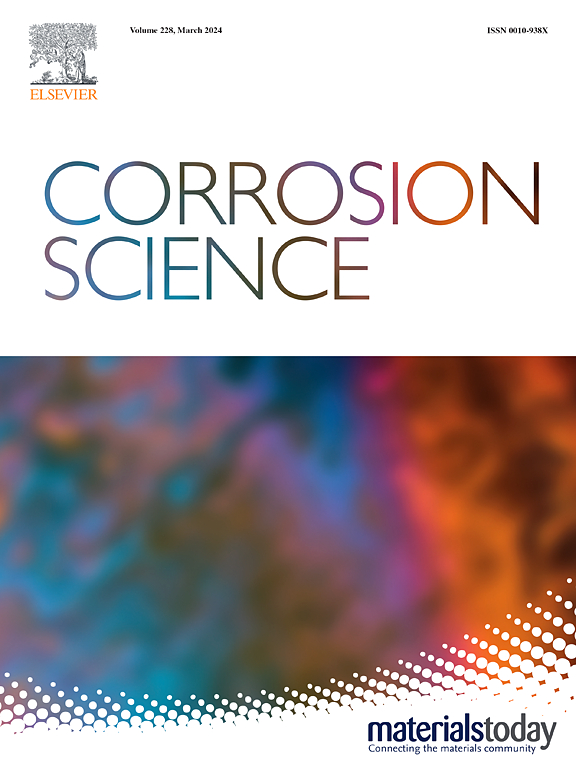The effect of Si on the microstructure and corrosion resistance of XSi9Cr ferritic/martensitic steel in oxygen-saturated lead-bismuth eutectic
IF 7.4
1区 材料科学
Q1 MATERIALS SCIENCE, MULTIDISCIPLINARY
引用次数: 0
Abstract
To understand the role of Si in the formation of composite oxide films, the corrosion behavior of XSi9Cr (X = 0, 0.4, 0.7, 1.0 wt%) ferritic/martensitic (F/M) steels was investigated in static oxygen-saturated lead-bismuth eutectic (LBE) at 550 °C for 1000 h. As the Si content increased from 0 to 1.0 wt%, the total thickness of the oxide films decreased by ∼27 %, which is primarily attributed to that SiO2 promoted the nucleation of Fe-Cr spinel and enhanced the densification and adhesion of the oxide films. In addition, δ-ferrite precipitated in 0.7Si9Cr and 1.0Si9Cr F/M steels improved its corrosion resistance by forming dense Cr-rich oxide films on δ-ferrite owing to its higher Cr content and lower defect density. The effect mechanism of Si on microstructure and corrosion behavior of XSi9Cr F/M steel is also discussed.
饱和氧铅铋共晶中Si对XSi9Cr铁素体/马氏体钢组织及耐蚀性的影响
为了了解Si在复合氧化膜形成中的作用,研究了XSi9Cr (X = 0,0.4,0.7,1.0 wt%)铁素体/马氏体(F/M)钢在静态氧饱和铅铋共晶(LBE)中550°C、1000 h的腐蚀行为。当Si含量从0增加到1.0 wt%时,氧化膜总厚度减少了~ 27 %,这主要是由于SiO2促进了Fe-Cr尖晶石的形核,增强了氧化膜的致密性和附着力。在0.7Si9Cr和1.0Si9Cr F/M钢中析出δ-铁素体,由于δ-铁素体的Cr含量较高,缺陷密度较低,在δ-铁素体表面形成致密的富Cr氧化膜,从而提高了F/M钢的耐蚀性。讨论了Si对XSi9Cr F/M钢组织和腐蚀行为的影响机理。
本文章由计算机程序翻译,如有差异,请以英文原文为准。
求助全文
约1分钟内获得全文
求助全文
来源期刊

Corrosion Science
工程技术-材料科学:综合
CiteScore
13.60
自引率
18.10%
发文量
763
审稿时长
46 days
期刊介绍:
Corrosion occurrence and its practical control encompass a vast array of scientific knowledge. Corrosion Science endeavors to serve as the conduit for the exchange of ideas, developments, and research across all facets of this field, encompassing both metallic and non-metallic corrosion. The scope of this international journal is broad and inclusive. Published papers span from highly theoretical inquiries to essentially practical applications, covering diverse areas such as high-temperature oxidation, passivity, anodic oxidation, biochemical corrosion, stress corrosion cracking, and corrosion control mechanisms and methodologies.
This journal publishes original papers and critical reviews across the spectrum of pure and applied corrosion, material degradation, and surface science and engineering. It serves as a crucial link connecting metallurgists, materials scientists, and researchers investigating corrosion and degradation phenomena. Join us in advancing knowledge and understanding in the vital field of corrosion science.
 求助内容:
求助内容: 应助结果提醒方式:
应助结果提醒方式:


